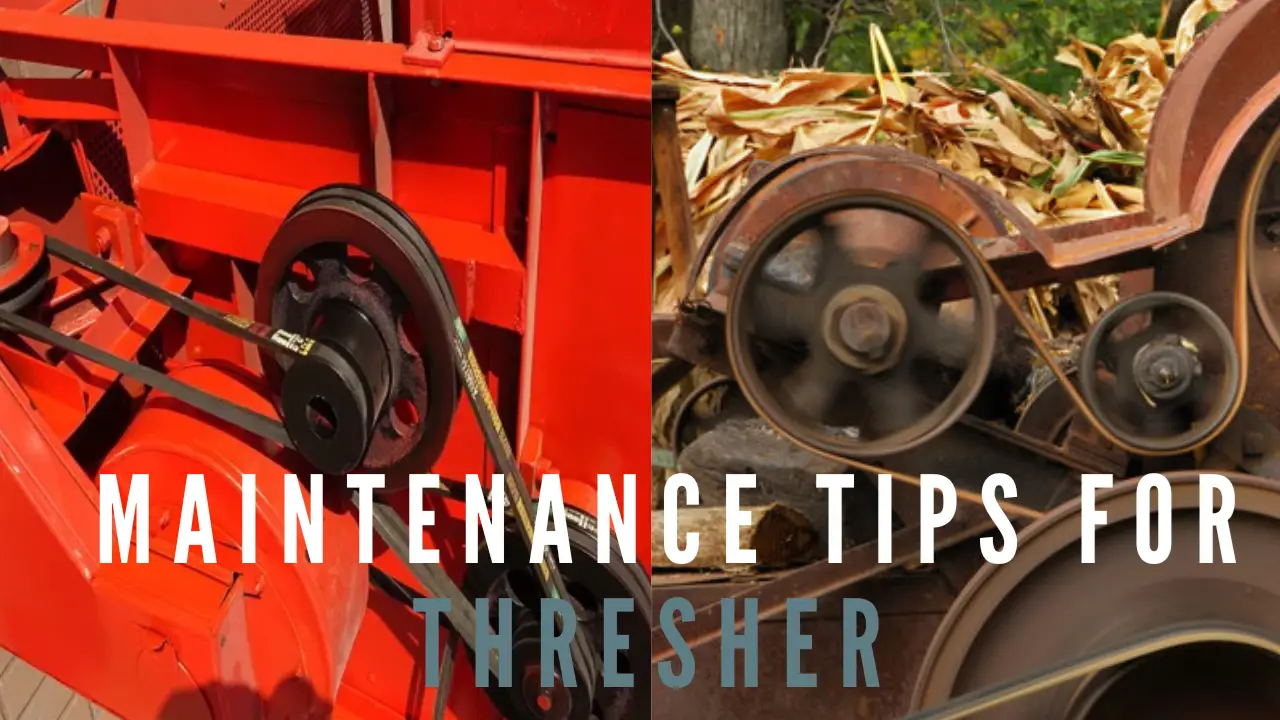This post may contain affiliate links which means I may receive a commission for purchases made through links. Learn more on my Private Policy page.
Using a thresher efficiently and effectively can be a game-changer for any farmer, but understanding the best practices is crucial. In this article, we will explore the key tips and techniques that will ensure you get the most out of your thresher. From proper maintenance to optimal settings, we’ve got you covered. So, if you’re ready to take your harvesting process to the next level, let’s dive into the world of thresher best practices together.
Preparation
Before using a thresher, it is crucial to properly prepare for the task at hand. This involves taking a few important steps to ensure a smooth and successful operation.
Clean and inspect the thresher
Start by thoroughly cleaning the thresher to remove any dirt, debris, or crop residue that may have accumulated. This will help maintain the machine’s performance and prevent any potential issues during operation. Carefully inspect the thresher for any signs of damage, such as worn-out parts or loose bolts. Addressing these issues beforehand will prevent any unexpected breakdowns during operation.
Check the condition of the crop
It is essential to assess the quality and condition of the crop before using the thresher. Remove any damaged or rotten crops, as they can compromise the overall threshing process. By ensuring the crop is in good condition, you can achieve optimal results and maintain the efficiency of the thresher.
Set up a safe work area
Setting up a safe work area is crucial to avoid accidents and injuries. Clear any obstacles or debris that might impede the operation of the thresher. Ensure proper lighting conditions, especially if working during low light hours. It is also recommended to mark boundaries or use barriers to prevent unauthorized personnel from entering the work area. Taking these precautions will help create a safe and productive environment.
Safety Measures
When operating a thresher, it is vital to prioritize safety. By following these safety measures, you can minimize the risk of accidents and injuries.
Wear appropriate protective gear
Before starting the thresher, it is essential to wear the appropriate protective gear. This typically includes safety goggles, earplugs or earmuffs, gloves, and boots. These protective measures are crucial to shield yourself from potential hazards, such as flying debris or loud noise generated by the thresher.
Ensure proper training and supervision
Proper training is paramount before operating a thresher. It is important to familiarize yourself with the machine’s operation, controls, and safety features. If you are new to using a thresher, seek training from experienced individuals or enroll in a relevant training program. Additionally, it is recommended to have a supervisor or expert present during the initial use to provide guidance and ensure safe operation.
Follow safety guidelines for maintenance and repair
Thresher maintenance and repair should only be performed by individuals who have received proper training. Follow the manufacturer’s guidelines for maintenance procedures, and never attempt to repair the machine without the necessary expertise. Regularly inspect the thresher for any signs of wear or damage, and address any issues promptly to prevent potential accidents or malfunctions.
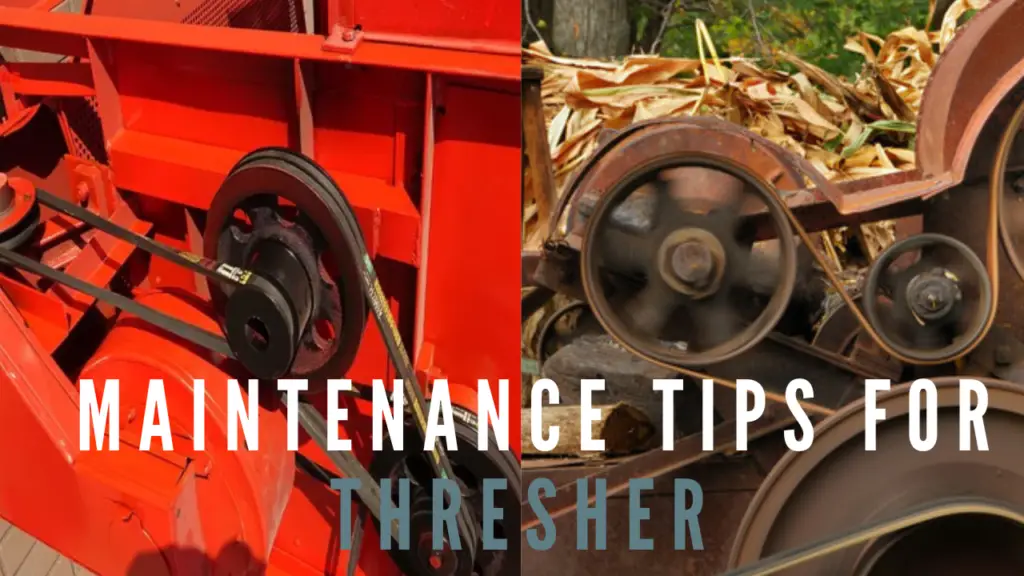
This image is property of t-news.b-cdn.net.
Selection and Adjustment
Selecting the right thresher for the crop and ensuring proper adjustments are made are crucial for maximizing efficiency and achieving optimal results.
Choose the right thresher for the crop
Different threshers are designed for specific crops, so it is important to select the appropriate one for the type of crop you are working with. Consider factors such as the size, moisture content, and fragility of the crop when choosing the thresher. Using the right machine will help minimize crop damage and increase the efficiency of the threshing process.
Adjust the settings based on crop conditions
Each crop may require different settings to achieve the desired results. Adjusting the thresher settings according to the crop’s characteristics, such as moisture content and seed size, is crucial. Refer to the manufacturer’s guidelines for recommended settings or consult with experts in the field to ensure the thresher is configured optimally for the specific crop being processed.
Ensure proper spacing between concave and rotor
The spacing between the concave and the rotor plays a significant role in determining the threshing efficiency and quality of the output. It is important to set the spacing correctly to prevent damage to the crop or excessive grain loss. Refer to the thresher’s manual or consult with experts to determine the ideal spacing for your specific crop.
Loading the Crop
Properly loading the crop onto the thresher is essential for efficient and effective threshing. Follow these guidelines to ensure a smooth operation.
Remove foreign materials and debris
Before loading the crop, carefully remove any foreign materials, such as stones, sticks, or metal objects that may be present. These materials can damage the thresher or cause safety hazards during operation. Thoroughly inspect the crop and remove any debris or foreign objects to ensure a clean and safe threshing process.
Feed the thresher gradually and evenly
When feeding the crop into the thresher, do so gradually and evenly to maintain a consistent workload on the machine. Avoid overloading the thresher, as this can lead to clogging, decreased efficiency, and potential damage to the machine. By feeding the crop gradually and evenly, you can achieve optimal threshing results and prevent unnecessary stress on the thresher.
Avoid overloading the thresher
Overloading the thresher can lead to a variety of problems, including reduced efficiency, increased wear and tear on the machine, and potential breakdowns. It is important to monitor the thresher’s capacity and avoid exceeding its recommended limits. Always refer to the thresher’s manual or consult with experts to determine the maximum capacity for the specific crop you are working with.
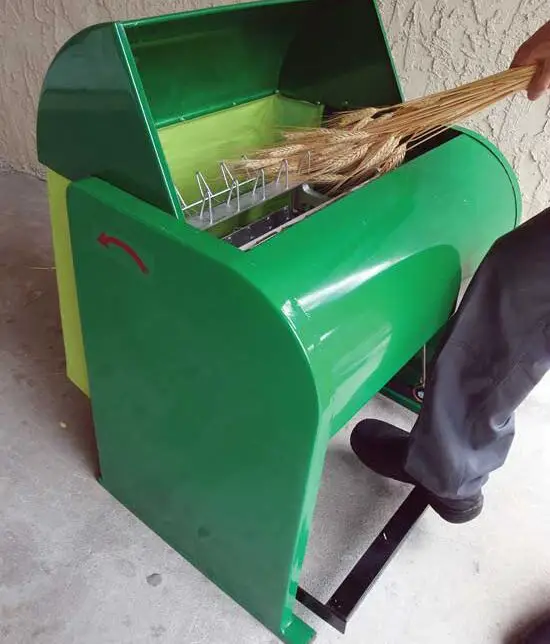
This image is property of ogden_images.s3.amazonaws.com.
Operation Techniques
To ensure the best possible operation of the thresher, it is important to follow these techniques and guidelines.
Maintain a consistent ground speed
Consistency in ground speed is crucial for achieving optimal results. When operating the thresher, maintain a consistent speed to ensure even threshing and minimize grain losses. Sudden changes in ground speed can negatively impact the threshing process and result in inconsistent grain separation.
Monitor thresher performance regularly
Regularly monitoring the thresher’s performance is essential for identifying any issues or inefficiencies during operation. Keep an eye on key parameters, such as grain loss, crop output, and overall threshing efficiency. By actively monitoring the thresher’s performance, you can quickly address any problems and make necessary adjustments to optimize its operation.
Make adjustments for different crop varieties
Different crops may require slight adjustments in operation techniques to achieve optimal results. When working with different crop varieties, be mindful of their specific characteristics and adjust the thresher settings and operation techniques accordingly. It is important to stay familiar with various crop requirements to ensure the best possible threshing outcomes.
Maintenance and Cleaning
Proper maintenance and cleaning are essential for the longevity and optimal performance of the thresher. Follow these guidelines to ensure the thresher remains in good condition.
Clean the thresher after each use
After completing the threshing process, thoroughly clean the thresher to remove any crop residue, dirt, or debris that may have accumulated. Pay close attention to hard-to-reach areas, such as the sieves, concaves, and screens, as these can easily become clogged. Cleaning the thresher after each use prevents buildup, corrosion, and potential issues in the next operation.
Regularly inspect and replace worn parts
Regular inspection of the thresher’s components is essential for identifying any worn-out or damaged parts. Check belts, chains, gears, bearings, and other moving parts for signs of wear and tear. Replace any worn-out or damaged parts promptly to prevent sudden breakdowns and ensure the thresher’s optimal performance.
Keep moving parts properly lubricated
Proper lubrication of the thresher’s moving parts is crucial for smooth operation and preventing premature wear. Regularly lubricate the necessary parts as recommended by the manufacturer or specified in the thresher’s manual. Adequate lubrication reduces friction, heat, and wear, extending the lifespan of the machine and maintaining its efficiency.
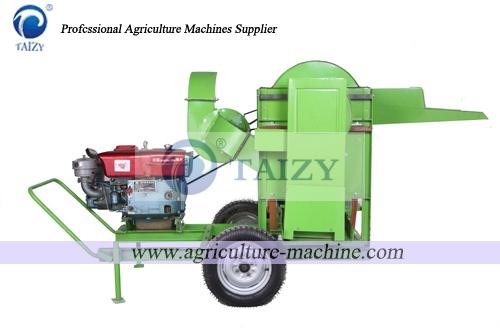
This image is property of static.agriculture-machine.com.
Storage and Transportation
Proper storage and transportation of the thresher are vital for preserving its condition and ensuring its safe utilization in the future.
Store the thresher in a dry and secure area
When not in use, store the thresher in a dry and secure area to prevent moisture buildup, rust, or damage. Ensure the storage area has adequate ventilation and protection from the elements. If possible, cover the thresher with a tarp or protective covering to shield it from dust and debris. Proper storage conditions will help maintain the thresher’s integrity and prolong its lifespan.
Securely tie down the thresher during transportation
When transporting the thresher, it is essential to securely tie it down to prevent any movement or shifting. Use appropriate restraints and secure all movable parts to ensure they remain in place during transit. This prevents potential damage to the thresher and reduces the risk of accidents or injuries during transportation.
Follow proper storage and transportation guidelines
Refer to the thresher’s manual or manufacturer’s recommendations for specific storage and transportation guidelines. They may provide additional instructions or precautions that are crucial for maintaining the thresher’s condition, as well as ensuring the safety of the individuals involved.
Environmental Considerations
Threshing operations have environmental implications, and it is important to take certain measures to minimize any negative impacts.
Prevent soil erosion during threshing
Threshing activities can cause soil erosion if not conducted carefully. To minimize this, take precautions such as using proper ground clearance to prevent excessive soil disturbance, avoiding threshing on steep slopes, and employing erosion control practices like contour farming or terracing. Respecting the soil and implementing erosion prevention measures will help maintain its health and productivity.
Dispose of crop residues responsibly
Crop residues generated during threshing should be disposed of responsibly. These residues can be beneficial as organic matter or feed for livestock. Consider recycling or repurposing crop residues instead of burning them, which can contribute to air pollution. Responsible disposal of crop residues helps promote environmental sustainability and reduces waste.
Minimize fuel and energy use
Thresher operation requires fuel or energy, and minimizing its consumption is important to reduce environmental impacts. Optimize thresher settings, operation techniques, and maintenance practices to maximize fuel efficiency. Regularly maintain the engine or power source to ensure it operates at its best. By minimizing fuel and energy use, you contribute to overall resource conservation and environmental protection.

This image is property of www.mdpi.com.
Troubleshooting
Threshing may encounter certain problems or issues, but by identifying and addressing them promptly, you can minimize downtime and ensure a successful operation.
Identify and address common thresher problems
Familiarize yourself with common thresher problems, such as uneven threshing, excessive grain loss, or mechanical breakdowns. Develop troubleshooting skills to quickly identify the cause of these issues and implement appropriate solutions. Often, referring to the thresher’s manual can provide valuable insights and instructions for troubleshooting common problems encountered during operation.
Consult the thresher manual for specific issues
For more specific or complex issues, consult the thresher manual. The manual is a valuable resource that provides detailed information on troubleshooting, repairs, and maintenance procedures for your specific thresher model. Follow the guidelines and instructions provided in the manual to effectively address any problems and ensure the thresher’s optimal performance.
Seek professional assistance when needed
If you encounter issues that exceed your level of expertise, do not hesitate to seek professional assistance. Contact a certified technician or the thresher manufacturer for guidance and support. Professional assistance can help resolve complex problems, prevent further damage, and ensure the thresher’s longevity and efficiency.
Training and Knowledge Sharing
Promoting the education and sharing of knowledge related to thresher technology is crucial for the advancement of the industry.
Promote thresher technology education
Encourage individuals interested in thresher operation to pursue proper education and training in the field. Thresher technology education programs, vocational training, or agricultural courses can provide valuable knowledge and skills necessary for safe and efficient operation. By promoting thresher technology education, we can ensure a competent workforce that understands the best practices and developments in the industry.
Share knowledge and experiences with others
Knowledge sharing is essential for developing a collective understanding and improving the thresher operation practices. Share your experiences, insights, and lessons learned with others in the industry. Participate in forums, workshops, or conferences to exchange ideas and learn from the experiences of fellow thresher operators. By fostering a culture of knowledge sharing, we can collectively enhance thresher operation practices and drive innovation in the field.
Stay updated with advancements in thresher technology
Thresher technology continually evolves, with new advancements and improvements being introduced regularly. Stay informed about the latest developments, innovations, and research in the industry. Subscribe to relevant publications, attend industry events, or join professional organizations to stay updated. Keeping abreast of advancements in thresher technology helps ensure you are equipped with the latest information and techniques to operate the thresher effectively.
In conclusion, utilizing a thresher effectively requires careful preparation, adherence to safety measures, selection and adjustment considerations, proper loading and operation techniques, regular maintenance and cleaning, and responsible storage and transportation practices. Additionally, it is crucial to be mindful of the environmental impact and promote knowledge sharing and continuous learning in the field. By following these best practices, you can maximize the efficiency and performance of your thresher while ensuring the safety of both operators and the environment.
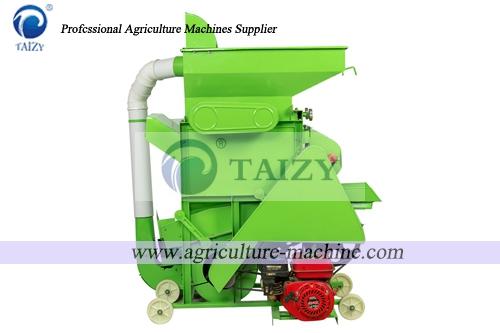
This image is property of static.agriculture-machine.com.
This post may contain affiliate links which means I may receive a commission for purchases made through links. Learn more on my Private Policy page.

